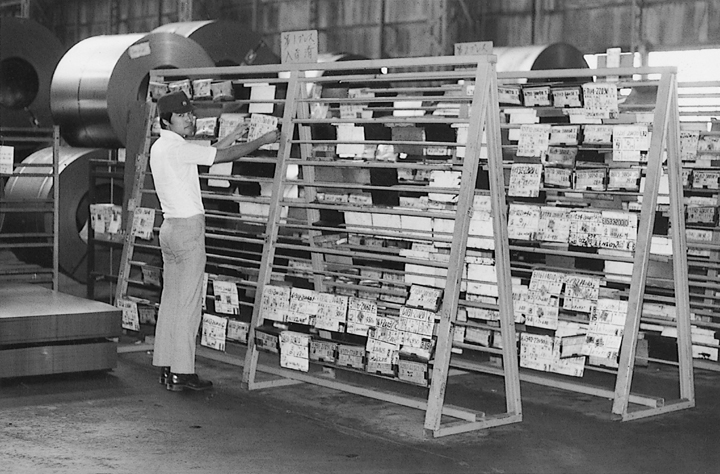
Where do the supermarket principle come from ? Between fuzzy origins and contradictions…
It is often said that the principle of supermarket, or more commonly called shops stocks in the middle of intralogistics comes from photos of American supermarkets showing goods arranged on shelves by specific location to be collected by customers seen by Taiichi Ohno ( Ohno and Mito 1988, p.16.). This Japanese engineer had the idea of re-appropriating this principle and thus installed his first supermarket in the early 1950s in the machine shop of his main factory in Toyota City.
More or less substantiated information also suggests that the supermarket method was introduced on the basis of clues obtained from a report on a Lockheed aircraft factory in the United States in an industry publication. in the spring of 1954. According to his information, by using the supermarket method of assembling jet bombers, expenses were reduced by $250,000 annually and 60,000 square feet of warehouse space could be utilized at other purposes.

At that time, supermarkets were not common in Japan, and no one had personal experience with supermarkets to help them understand the system. Toyota Motor Co., Ltd. deduced from the article that the next process is the “customer” and the previous process is the “supermarket”. The method by which the customer retrieves the necessary items from the supermarket shelves was understood to mean that the next process retrieves the parts from the previous process.
By applying this concept to the assembly processes, it was possible to assemble the required vehicle models according to plan by fixing the assembly parts in advance and having them picked up by the general assembly plant. The same method was adopted at the machine assembly plant, which collected the parts it needed from the machining plant. This was the creation of the supermarket method of Toyota Motor Co., Ltd.1.
The supermarket method evolved into the Kanban system with the addition of a production instruction sheet called Kanban (card or board showing product name, product number and quantity). The system then developed into the Just-in-Time system, a method of producing only what is needed, when it is needed and in the quantity needed, creating an innovative system that has been widely adopted even by suppliers.



